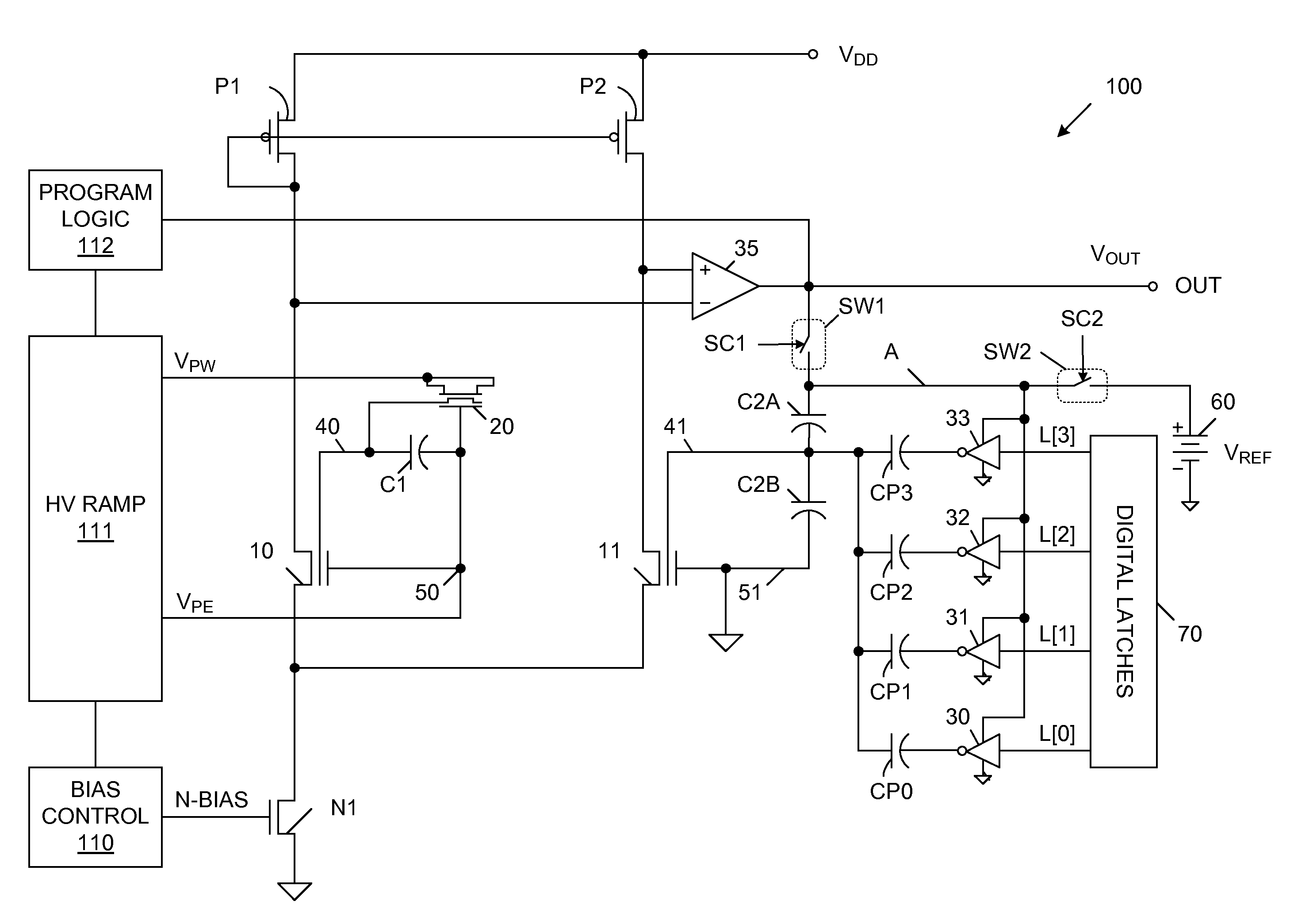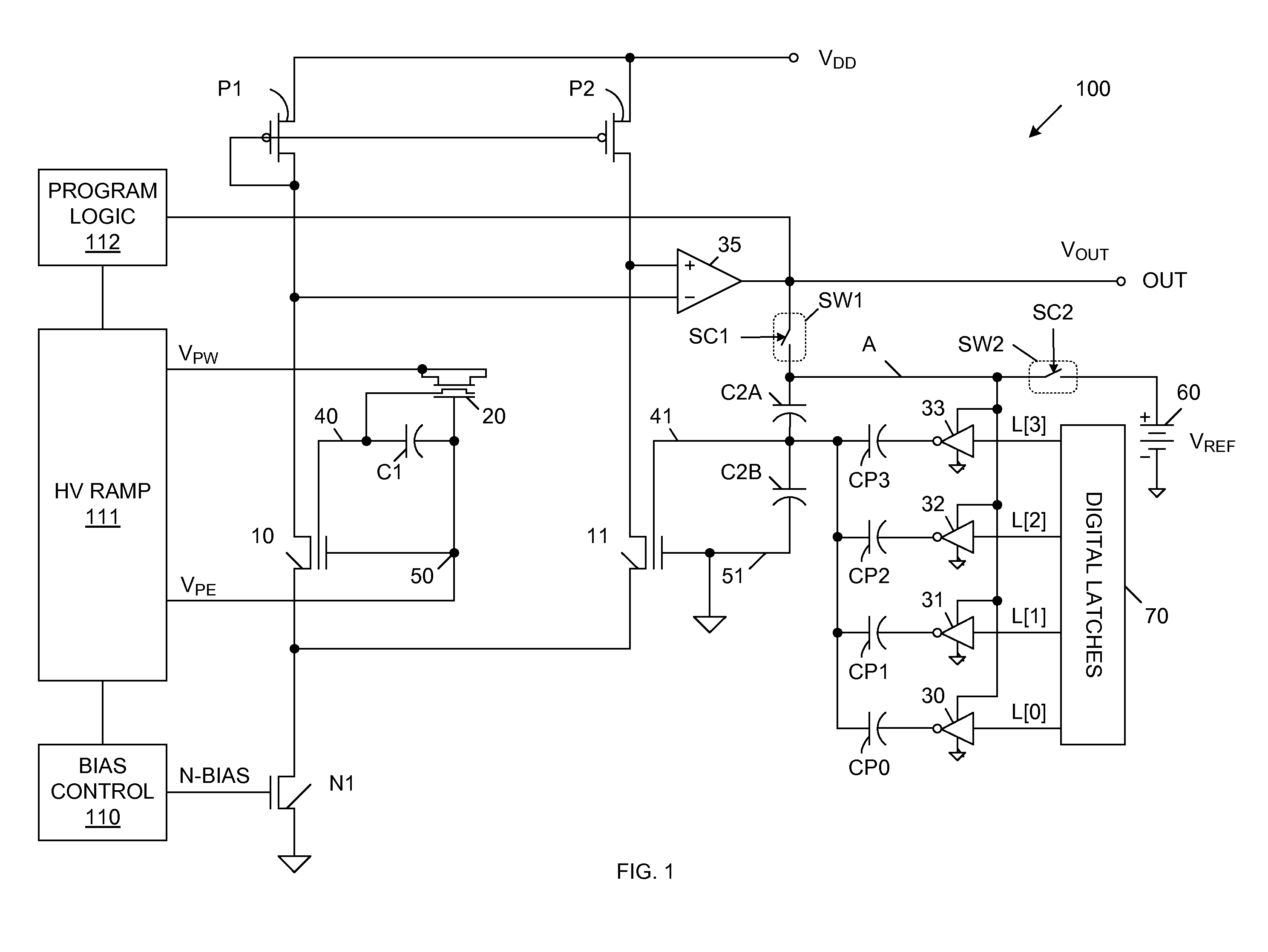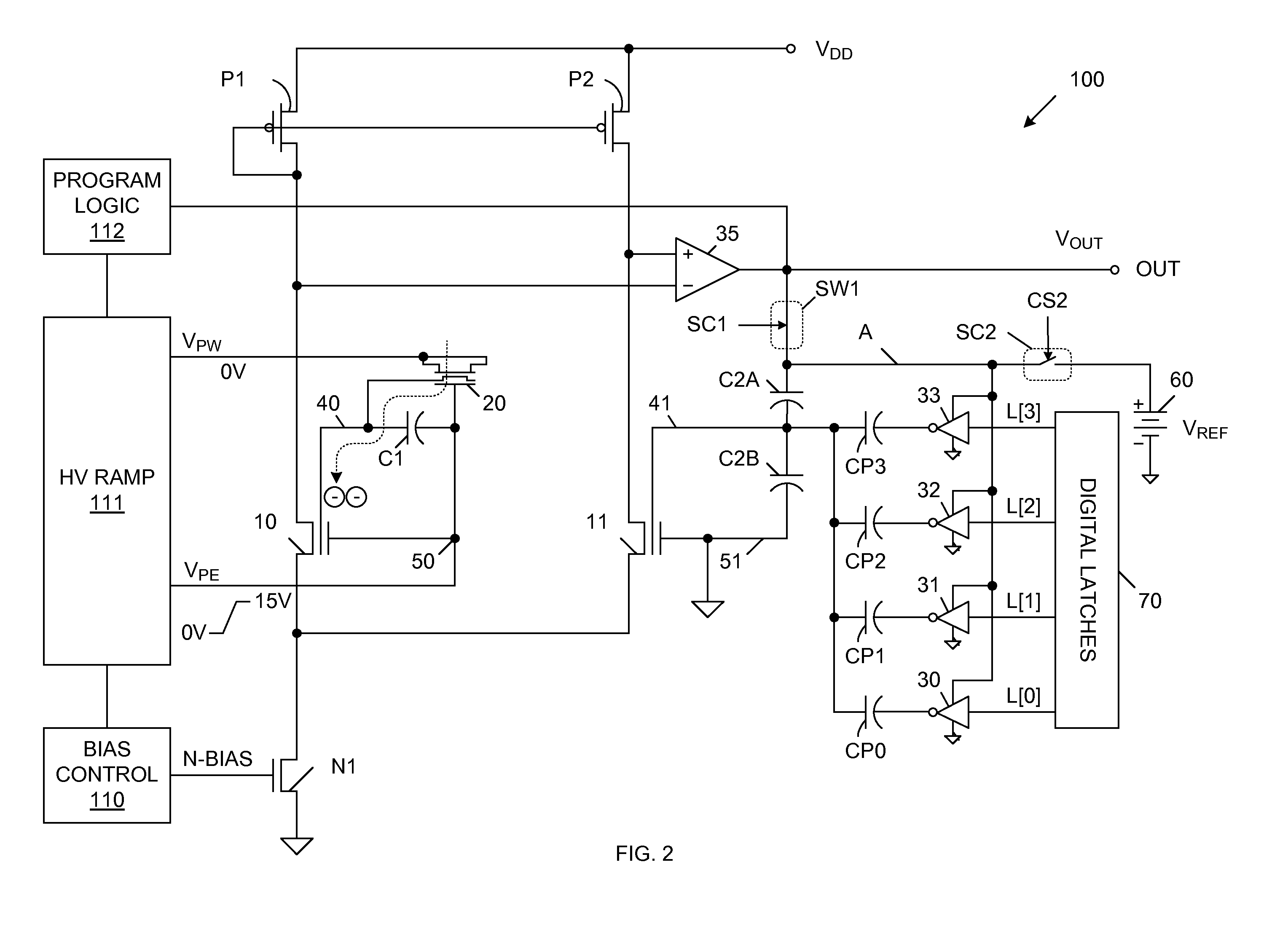Method for trimming the temperature coefficient of a floating gate voltage reference
a voltage reference and temperature coefficient technology, applied in static storage, digital storage, instruments, etc., can solve the problems of difficult reference tuning, long silicon iterations, and large amount of silicon, and achieve precise and stable reference voltage, good precision, and good precision
- Summary
- Abstract
- Description
- Claims
- Application Information
AI Technical Summary
Benefits of technology
Problems solved by technology
Method used
Image
Examples
Embodiment Construction
[0024]FIG. 1 is a circuit diagram of a CMOS voltage reference circuit 100 in accordance with one embodiment of the present invention. Voltage reference circuit 100 includes non-volatile memory (NVM) transistors 10-11, thin-dielectric tunnel capacitor 20, p-channel MOS transistors P1-P2, n-channel MOS transistor N1, capacitors C1, C2A, C2B, CP0, CP1, CP2 and CP3, inverter circuits 30-33, differential amplifier 35, switches SW1-SW2, reference voltage supply 60 and digital latches 70.
[0025]Non-volatile memory transistors 10-11 include floating gates 40-41, respectively, and control gates 50-51, respectively. Each of non-volatile memory transistors 10-11 has a standard double polysilicon gate structure with a dielectric thickness large enough (e.g., greater than 150 Angstroms) to prevent charge leakage from the floating gates 40-41. In one embodiment, each of the floating gates 40-41 is separated from the corresponding control gate 50-51 by a dielectric with effective silicon dioxide th...
PUM
 Login to View More
Login to View More Abstract
Description
Claims
Application Information
 Login to View More
Login to View More - R&D
- Intellectual Property
- Life Sciences
- Materials
- Tech Scout
- Unparalleled Data Quality
- Higher Quality Content
- 60% Fewer Hallucinations
Browse by: Latest US Patents, China's latest patents, Technical Efficacy Thesaurus, Application Domain, Technology Topic, Popular Technical Reports.
© 2025 PatSnap. All rights reserved.Legal|Privacy policy|Modern Slavery Act Transparency Statement|Sitemap|About US| Contact US: help@patsnap.com



